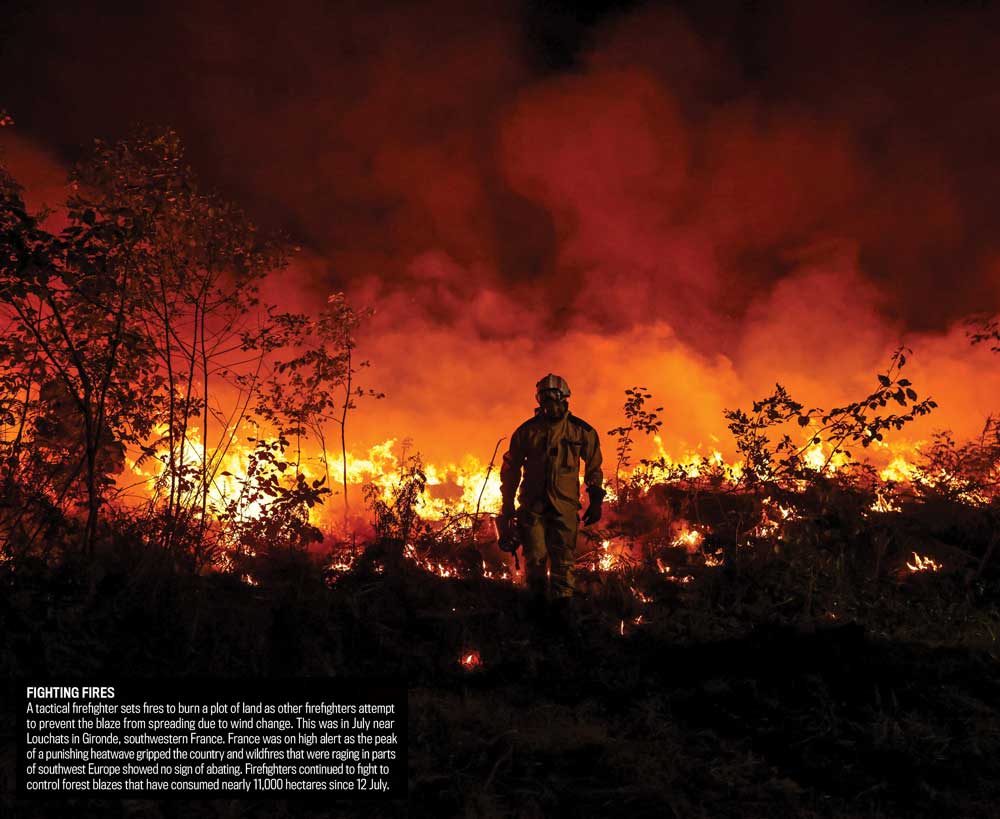GLOBAL PERSPECTIVES
Blazing Forest Fires
Forest fires supercharged by climate change are burning twice as much global tree cover as 20 years ago. Data shows that the equivalent of 16 football pitches are now lost every minute.
Research shows in unprecedented detail how wildfires have progressed over the past two decades and claimed an estimated three million more hectares annually – an area the size of Belgium when compared with 2001.
The study also shows that the majority of tree cover loss is occurring in the boreal forests that blanket much of Russia, Canada and Alaska. These forests are among the largest carbon sinks on Earth.
Researchers from the University of Maryland used satellite imagery to map areas of tree cover lost including those that were burned by stand-replacing forest fires. The latter kills all or most of the forest’s canopy, and causes long-term changes to forest structure and soil chemistry.
2021 saw one of the worst seasons for forest fires since the turn of the century with a global loss of 9.3 million hectares of tree cover. According to data compiled by Global Forest Watch and World Resources Institute, it amounted to more than a third of all the forests lost last year.
Research analyst at Global Forest Watch James McCarthy tells AFP: “ Forest fires are getting worse worldwide.”
The EU’s satellite monitoring service says that so far in 2022, Western Europe has experienced record fire activity with tens of thousands of hectares of forest lost in France, Spain and Portugal.
Researchers note that climate change was likely a “major driver” in increased fire activity with extreme heat waves that render forests tinder dry. It’s already five times more likely today than 150 years ago. These drier conditions lead to higher emissions from fires, which further exacerbate climate change as part of a “fire-climate feedback loop,” they opine.
The vast majority (about 70%) of fire-related tree cover loss over the last two decades occurred in boreal regions. This is possibly because high latitude regions are warming at a faster rate than the rest of the planet.
Researchers warn that increased changes to climate and fire activity could eventually transform boreal forests, and make them a source of carbon emissions rather than a carbon sink.
“In these boreal regions, carbon has accumulated in the soil over hundreds of years and has been protected by a moist layer on top,” observes McCarthy. He adds: “These more frequent and serious fires are burning off this top layer, and it’s exposing the carbon in the soil.”
This century, fire-related tree cover loss in the tropics has increased around five percent – about 36,000 hectares annually. However, fire is not the principal cause of forest loss in these regions since deforestation and forest degradation are the main drivers.
But researchers note that forest loss from deforestation was making it more likely that forests would be lost to fire, as the practice leads to higher regional temperatures and drier vegetation.
They call on governments to improve forest resilience by ending deforestation and limiting local forest management practices that include controlled burning, which can easily burn out of control particularly during dry spells.





